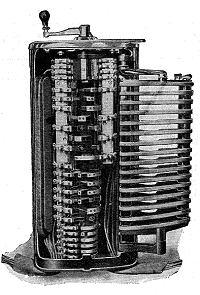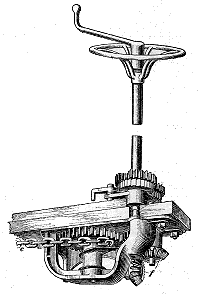
British Westinghouse T1 controller of about 1910 with the arc shield opened to show the interior workings.

Peacock brake handle complete with additional hand wheel to control slipper brakes.
|
Starting & Stopping
Tramcar Controllers and Brakes By John Prentice |
To enable a tram to move, there has to be a method to control it, that is to make it start, change speed and stop. Such functions are governed by the controller and the brakes.

British Westinghouse T1 controller of about 1910 with the arc shield opened to show the interior workings. |

Peacock brake handle complete with additional hand wheel to control slipper brakes. |
On these pages we take a look at features in the context of the traditional first generation tram, and specifically those used in Britain. The principles were the same elsewhere. In fact American tramcar technology was in advance of that in Europe and most of the earliest designs originated there.
Today's trams now use electronic control of speed and braking forces and are beyond the scope of this review. What are described here are the normal practices during the first half of the 20th century, but it is worth noting that there were many exceptions and oddities.
My thanks go to Bob Appleton for his help in locating some of the patent documents referred to in this article.